Kirby Larson's Blog, page 28
October 1, 2013
From the Office of the Future of Reading
Today's guest blogger is Joan Jurgens, a third grade teacher in the Gifted and Talented program at PS 220 Queens, Forest Hills, New York.

Using the Book Wonder As A Read Aloud In The Classroom
by Joan Jurgens
One of the most memorable experiences of my life was being a volunteer in a hospital for chronically ill children. I volunteered with awe and reverence watching young lives struggle with their day to day routines. Few exhibited sadness and I was grateful for this enriching experience.
As a teacher of young children, I wish to share my experiences that are meaningful and can help shape young minds in a positive direction. Along with explaining my past volunteering experiences, I came across an extraordinary book that could send a strong message to readers about acceptance and more over compassion for those individuals who are different from the general population.

This book called Wonderby Patricia Palacio is a fabulous read aloud that envelops the students’ interest from the first page to the last chapter. While it is a lengthy realistic fiction novel, the high level conversations and ah ha moments found by my students were well worth the time invested by this teacher. Although I could only spend a prescribed amount of time reading to this class Ms. Palacio’s fine literary prose, the students rose to the occasion having their own private talks among themselves how this book influenced their lives. And better yet, many impatient for the finale, bought their own copy of the book so that they could read ahead and or reread chapters that we had already completed.
The class grew to know the characters and their attributes and lively discussions blossomed from their grasping of this new information. Why were some characters so mean spirited towards Auggie, a twelve year old born with cranialfacial abnormalities? How could a child be born with this severe deformity? What could he really look like? Many drew pictures illustrating how they thought the main character would appear in our world. My students were appalled at two things about the book. The first being how other students who Auggie had contact with could treat him in such a vicious and condescending way and finally why this book didn’t win the Newbery award. Apparently, the ending was too pat for the review board.
One student in my class was an aficionado of Star Wars corrected me constantly in my mispronunciation of the Star Wars’ characters as Auggie had a great love of this fantasy movie. The class evolved at least in my eyes as a cohesive body of educated young adults, but truly they were only nine years old! Their sophisticated explanations of the cruel bullying that Auggie experienced in his young life were remarkable. The comments from my students proved that when students are educated about the unknown, they become informed pupils who make wise decisions which would raise their social consciousness.
As a young girl, I loved swimming in our town pool. I could spend hours with my imagination floating and doing the doggy paddle. I would only emerge when my fingers were so shriveled from the pool water that it was impossible to stay afloat another minute. However, on occasion a middle aged couple would bring their disabled son into the pool. I presumed that he had cerebral palsy and each parent took turns holding him afloat in the water. I watched with curious eyes and still to this day I can remember the mother’s loving expression as her son delighted in the cool chlorine currents of the water. But, I would never swim near them! Perhaps I would catch what this boy had! I always maintained a comfortable, at least in my mind, distance from the duo.
In retrospect, I never discussed my deep emotional feelings about swimming with handicapped people and how foolish I was as a child with my distorted thinking. I believe this book Wonderbridges the missing pieces for young readers. Palacio adeptly explains in small increments easy to understand explanations for Auggie’s disabilities. The unfolding of Auggie’s first school year in a regular school is told with humor and shocking honesty as students react to Auggie’s deformed face with pity, sympathy, and malice.
I felt that my students became a cheering team for Auggie and the anger that they felt for some students in the book who were down right cruel towards the protagonist was almost palpable. We would role play the inner workings of many of the main characters’ minds. This literary dramatization helped to facilitate wonderful creative dialogue and led to explicit analysis of scenes in this realistic novel. Each time I would read a chapter from Wonder, I felt as if Auggie hovered above our reading circle urging on my students’ social conscience. We wished for Auggie to be part of our classroom and he was!
I strongly believe that each one of my twenty-two students left my class in June as a positively changed individual with a deep regard for others who are different than themselves. And if this is true, I can honestly say, literature can change lives.
Thank you, Joan, for sharing your class' experience with us. It'd be great to hear from other teachers and librarians about book titles that have spurred similar conversation and growth.

Using the Book Wonder As A Read Aloud In The Classroom
by Joan Jurgens
One of the most memorable experiences of my life was being a volunteer in a hospital for chronically ill children. I volunteered with awe and reverence watching young lives struggle with their day to day routines. Few exhibited sadness and I was grateful for this enriching experience.
As a teacher of young children, I wish to share my experiences that are meaningful and can help shape young minds in a positive direction. Along with explaining my past volunteering experiences, I came across an extraordinary book that could send a strong message to readers about acceptance and more over compassion for those individuals who are different from the general population.

This book called Wonderby Patricia Palacio is a fabulous read aloud that envelops the students’ interest from the first page to the last chapter. While it is a lengthy realistic fiction novel, the high level conversations and ah ha moments found by my students were well worth the time invested by this teacher. Although I could only spend a prescribed amount of time reading to this class Ms. Palacio’s fine literary prose, the students rose to the occasion having their own private talks among themselves how this book influenced their lives. And better yet, many impatient for the finale, bought their own copy of the book so that they could read ahead and or reread chapters that we had already completed.
The class grew to know the characters and their attributes and lively discussions blossomed from their grasping of this new information. Why were some characters so mean spirited towards Auggie, a twelve year old born with cranialfacial abnormalities? How could a child be born with this severe deformity? What could he really look like? Many drew pictures illustrating how they thought the main character would appear in our world. My students were appalled at two things about the book. The first being how other students who Auggie had contact with could treat him in such a vicious and condescending way and finally why this book didn’t win the Newbery award. Apparently, the ending was too pat for the review board.
One student in my class was an aficionado of Star Wars corrected me constantly in my mispronunciation of the Star Wars’ characters as Auggie had a great love of this fantasy movie. The class evolved at least in my eyes as a cohesive body of educated young adults, but truly they were only nine years old! Their sophisticated explanations of the cruel bullying that Auggie experienced in his young life were remarkable. The comments from my students proved that when students are educated about the unknown, they become informed pupils who make wise decisions which would raise their social consciousness.
As a young girl, I loved swimming in our town pool. I could spend hours with my imagination floating and doing the doggy paddle. I would only emerge when my fingers were so shriveled from the pool water that it was impossible to stay afloat another minute. However, on occasion a middle aged couple would bring their disabled son into the pool. I presumed that he had cerebral palsy and each parent took turns holding him afloat in the water. I watched with curious eyes and still to this day I can remember the mother’s loving expression as her son delighted in the cool chlorine currents of the water. But, I would never swim near them! Perhaps I would catch what this boy had! I always maintained a comfortable, at least in my mind, distance from the duo.
In retrospect, I never discussed my deep emotional feelings about swimming with handicapped people and how foolish I was as a child with my distorted thinking. I believe this book Wonderbridges the missing pieces for young readers. Palacio adeptly explains in small increments easy to understand explanations for Auggie’s disabilities. The unfolding of Auggie’s first school year in a regular school is told with humor and shocking honesty as students react to Auggie’s deformed face with pity, sympathy, and malice.
I felt that my students became a cheering team for Auggie and the anger that they felt for some students in the book who were down right cruel towards the protagonist was almost palpable. We would role play the inner workings of many of the main characters’ minds. This literary dramatization helped to facilitate wonderful creative dialogue and led to explicit analysis of scenes in this realistic novel. Each time I would read a chapter from Wonder, I felt as if Auggie hovered above our reading circle urging on my students’ social conscience. We wished for Auggie to be part of our classroom and he was!
I strongly believe that each one of my twenty-two students left my class in June as a positively changed individual with a deep regard for others who are different than themselves. And if this is true, I can honestly say, literature can change lives.
Thank you, Joan, for sharing your class' experience with us. It'd be great to hear from other teachers and librarians about book titles that have spurred similar conversation and growth.
Published on October 01, 2013 05:30
September 26, 2013
From the Office of the Future of Reading
Please welcome today's guest blogger, Shelly Stasney. Shelly is in her 15th year of education, currently teaching 5th grade to a wonderful group of students in Houston, Texas. She aspires to write a book about the morning meetings she does in her classroom. She gets many of her book ideas from Nerdy Book Clubbers on Twitter.
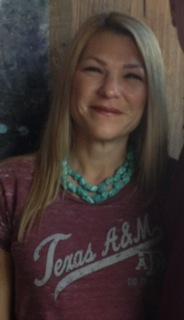
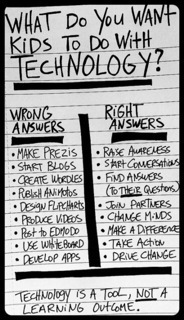
This image is from: https://twitter.com/BGruetzmacher/status/353615971648434176/photo/1
Connecting Kids and Books Through the Use of Technology
Many of us have read that quote that reports something to the effect that “There is no such thing as a child who doesn’t like reading. There are only children who haven’t found the right book yet.” When I read this quote, I took it to heart, and made it my personal mission to help every child I meet get that “right book” in their hands and read.
After reflecting on the above chart (seen on Twitter and
Pinterest), I added to this personal assignment: I was going to use technology more often to assist kids in finding that right book. Over the course of a school year, I took it a step smarter. How about if kids help each other find that book that sets them on fire, makes them drool or foam at the mouth, stay up all hours of the night, or kiss a book goodbye before they return it? Yes, these are all ways I have described just right books to kids. At first, they look at me as though I’m nuts, but by the time they leave 5th they've done at least one of the above.
Here are a few of the ways my students have used technology to connect each other to great books:
1. Edmodo:
I like to think of Edmodo as our class Twitter page. Students can post comments about anything school appropriate. I encourage students to post about books they are reading. They give one or two sentences on why they like a book, how many stars they would give it, and the genre. Students can link book trailers on Edmodo. Students and teachers can also post local authors visits. I have been surprised how many of my students have had their first encounter at a bookstore because they went to meet an author.
2. Kidblog:
Create a class blog page for students to make posts. The most successful topics I have assigned to spread the word about books were: Top 10 List, My Favorite Book, and Bio of a Reader. Read them for yourself here.
3. Book Trailers:
Last years’ students used Movie Maker to create book trailers on books from our classroom library. Every so often this year, I debut a trailer. Current students will also create book trailers. These can also be posted to Edmodo or class web pages.
4. Twitter and Author Blogs or Websites:
I encourage students to follow authors they admire on Twitter, Websites or Blogs. My students have had many authors respond to them. Sometimes I’m worried I have created little author stalkers, but the authors assure me
they find great pleasure in hearing from students. Many times students will find out when books are going to be released, and they will make sure the class is reminded until that date! This method even led our class to have a phone conversation with Ginny Rorby.
There are several other non-technological ways that I connect kids with books, but students thoroughly enjoy using technology as a tool to raise awareness about books and take action in our reading community. If you are not using any of the above to connect kids to books, I highly encourage you
to give it a try. None of these were difficult or time consuming. If you have other ideas, I’d love to hear them!
Thank you, Shelly, for these great ideas on how to connect the dots between technology and books!
You can find her on Twitter as @srstasney.


This image is from: https://twitter.com/BGruetzmacher/status/353615971648434176/photo/1
Connecting Kids and Books Through the Use of Technology
Many of us have read that quote that reports something to the effect that “There is no such thing as a child who doesn’t like reading. There are only children who haven’t found the right book yet.” When I read this quote, I took it to heart, and made it my personal mission to help every child I meet get that “right book” in their hands and read.
After reflecting on the above chart (seen on Twitter and
Pinterest), I added to this personal assignment: I was going to use technology more often to assist kids in finding that right book. Over the course of a school year, I took it a step smarter. How about if kids help each other find that book that sets them on fire, makes them drool or foam at the mouth, stay up all hours of the night, or kiss a book goodbye before they return it? Yes, these are all ways I have described just right books to kids. At first, they look at me as though I’m nuts, but by the time they leave 5th they've done at least one of the above.
Here are a few of the ways my students have used technology to connect each other to great books:
1. Edmodo:
I like to think of Edmodo as our class Twitter page. Students can post comments about anything school appropriate. I encourage students to post about books they are reading. They give one or two sentences on why they like a book, how many stars they would give it, and the genre. Students can link book trailers on Edmodo. Students and teachers can also post local authors visits. I have been surprised how many of my students have had their first encounter at a bookstore because they went to meet an author.
2. Kidblog:
Create a class blog page for students to make posts. The most successful topics I have assigned to spread the word about books were: Top 10 List, My Favorite Book, and Bio of a Reader. Read them for yourself here.
3. Book Trailers:
Last years’ students used Movie Maker to create book trailers on books from our classroom library. Every so often this year, I debut a trailer. Current students will also create book trailers. These can also be posted to Edmodo or class web pages.
4. Twitter and Author Blogs or Websites:
I encourage students to follow authors they admire on Twitter, Websites or Blogs. My students have had many authors respond to them. Sometimes I’m worried I have created little author stalkers, but the authors assure me
they find great pleasure in hearing from students. Many times students will find out when books are going to be released, and they will make sure the class is reminded until that date! This method even led our class to have a phone conversation with Ginny Rorby.
There are several other non-technological ways that I connect kids with books, but students thoroughly enjoy using technology as a tool to raise awareness about books and take action in our reading community. If you are not using any of the above to connect kids to books, I highly encourage you
to give it a try. None of these were difficult or time consuming. If you have other ideas, I’d love to hear them!
Thank you, Shelly, for these great ideas on how to connect the dots between technology and books!
You can find her on Twitter as @srstasney.
Published on September 26, 2013 05:30
September 25, 2013
Wednesday Wisdom
Always be a poet, even in prose.
Charles Baudelaire
Charles Baudelaire
Published on September 25, 2013 06:30
September 24, 2013
From the Office of the Future of Reading
Please welcome Donna Miller, a K-5 library teacher from Norwood, Massachusetts! She's got some lively ideas to help us kick off Banned Book Week.
 Donna Miller
Donna Miller
Banned Book Week is a fun week in my elementary library each year. I read a few picture books that have been challenged and have the students guess the reason. Each year produces similar guesses, but I usually get an interesting reason or two as well.

Most students think that Sylvester and the Magic Pebble should be banned because Sylvester isn’t wearing any clothes. Or, in the case of The Stupids, the title has a bad word in it.
We then discuss the difference between banned and challenged and I try to get my older students to imagine a world without A Light in the Attic, Harry Potter or James and the Giant Peach.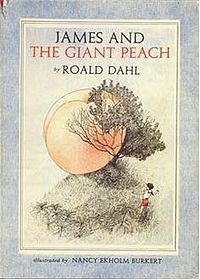

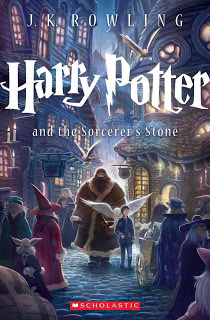
At the end of the lesson, I remind them that, in my library, they are encouraged to read but the choice of what they read is up to them.
I ask them, “If you borrow something that you don’t like or is contrary to your beliefs, what should you do?” “Return it and pick out something else” they drone. I always offer the suggestion that if they find a book they don’t think is appropriate for our school, to let me know.
For a few weeks following this lesson, an occasional book will be brought to my attention. (Poop: A Natural History of the Unmentionable and Guinness Book of World Records are two popular ones) We chat about it, and almost always the book goes back on the shelf.
So, it surprised me one day, many months after the lesson, when a fifth grader brought a book to my attention and told me he thought it should be banned. In a very adult-like manner he told me he read it twice, gave it to a friend to read, and after a quick discussion, they determined it should be taken off the shelf. Not having read the book myself, I told him I would read it and let him know.
Turns out he was right. It is a story for a more mature audience and I will pass it on to the middle school library teacher. When I relayed this information to him, his eyes lit up. I think he is looking forward to borrowing books from his new school next year.
What a great role model you are for your students, Donna; I can't imagine how empowered that young man felt to have an adult listen to his thoughts and not only respect them, but act on them. Thank you!
Readers: you can follow Donna on Twitter: @DonnaMiller44; and find her here on Goodreads.
 Donna Miller
Donna Miller
Banned Book Week is a fun week in my elementary library each year. I read a few picture books that have been challenged and have the students guess the reason. Each year produces similar guesses, but I usually get an interesting reason or two as well.

Most students think that Sylvester and the Magic Pebble should be banned because Sylvester isn’t wearing any clothes. Or, in the case of The Stupids, the title has a bad word in it.

We then discuss the difference between banned and challenged and I try to get my older students to imagine a world without A Light in the Attic, Harry Potter or James and the Giant Peach.



At the end of the lesson, I remind them that, in my library, they are encouraged to read but the choice of what they read is up to them.
I ask them, “If you borrow something that you don’t like or is contrary to your beliefs, what should you do?” “Return it and pick out something else” they drone. I always offer the suggestion that if they find a book they don’t think is appropriate for our school, to let me know.
For a few weeks following this lesson, an occasional book will be brought to my attention. (Poop: A Natural History of the Unmentionable and Guinness Book of World Records are two popular ones) We chat about it, and almost always the book goes back on the shelf.
So, it surprised me one day, many months after the lesson, when a fifth grader brought a book to my attention and told me he thought it should be banned. In a very adult-like manner he told me he read it twice, gave it to a friend to read, and after a quick discussion, they determined it should be taken off the shelf. Not having read the book myself, I told him I would read it and let him know.
Turns out he was right. It is a story for a more mature audience and I will pass it on to the middle school library teacher. When I relayed this information to him, his eyes lit up. I think he is looking forward to borrowing books from his new school next year.
What a great role model you are for your students, Donna; I can't imagine how empowered that young man felt to have an adult listen to his thoughts and not only respect them, but act on them. Thank you!
Readers: you can follow Donna on Twitter: @DonnaMiller44; and find her here on Goodreads.
Published on September 24, 2013 05:00
September 19, 2013
From the Office of the Future of Reading
Guest poster Jennifer Orr has spent all sixteen of her years as a teacher in a Title I school in the Virginia suburbs of Washington, D.C. Currently she teaches first graders but she has also taught fourth and fifth graders and thinks they are all fabulous.
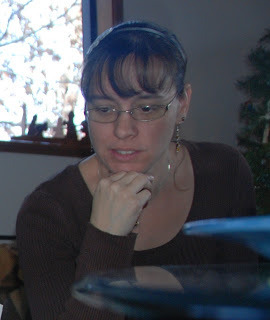 Jen Orr thinking about books!
Jen Orr thinking about books!Everyone Can Be A Reader
I can’t remember when I became a reader. It’s simply, to my memory, always been a part of me. But not every child is that lucky, for a variety of reasons. Many of my students don’t have a home full of books and don’t visit the library. This may be because the family can’t afford to purchase books and the parent(s) work multiple jobs and aren’t available for trips to the library. Some parents are illiterate or don’t have enough English to read to their children. To be perfectly honest, for some families survival, having a place to live, food to eat, and clothes to wear is enough of a challenge that things like books to read are a luxury they can’t manage.
As a teacher of first graders, forming life-long readers is something I take seriously. For those kiddos with a home full of books who are read to regularly and who see their parents reading, that’s pretty easy. For others, it’s less so.
One of the easiest things I can do as a teacher is provide books for my students. When they arrived at Open House (a chance to meet their teacher the week before school began) I had a table full of Keep Books available to them. These books are cheap and the text is accessible to even the most novice readers.
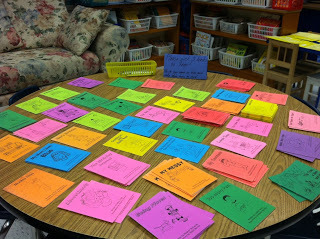 "Keep" books
"Keep" booksEvery student picked three to take home, even writing their names on them so they didn’t have to wonder if I wanted them back. If siblings were there and wanted books, they got three as well. I scour yard sales, library book sales, and used book stores for books to give to my students. In my classroom there is box of books ready. I give students some on several occasions in the first few weeks of the year. I give more before any holiday and again at the end of the year. Anytime they will be away from school for more than a weekend.
Our librarian does a lesson early in each school year which fits beautifully. She has teachers provide pictures of themselves reading, anywhere they might regularly read. She shows students their teachers reading on a couch, bed, chair, at the kitchen table, lying on the floor, waiting in line at the bank, on the beach, in the car, on a park bench, all over! Together they make a map of a home and label all the places they might like to read. After that, when I greet my students in the mornings, I might ask them where they’ve been reading. We talk what and where about books daily.
As for families, I take every opportunity to talk to them about supporting their children as readers -- at Open House, Back to School Night, conferences, even if I run into them at Target. Many parents help their children by giving them harder and harder books or by asking them to recount what they read. I encourage them to sit with their child and just listen as they read. I tell them to talk about the books together, not by simply retelling the story but by sharing thinking about it.
It’s two weeks since school started and we’re off to a good start. My first graders knew exactly what books they wanted at our school library and have even brought books in for me to read aloud. The value of books and reading is there. They just need the right opportunities to keep it growing.
Amen, Jen! We need to have the mindset that everyone can be a reader. Thank you for these thoughts.
If you want to learn more about what Jen thinks about connecting books and kids, follow her on Twitter: @jenorr
Published on September 19, 2013 05:30
September 18, 2013
Wednesday Wisdom
Let me live, love and say it well in good sentences.
Sylvia Plath
Sylvia Plath
Published on September 18, 2013 06:30
September 17, 2013
From the Office of the Future of Reading
Please welcome today's guest blogger, Tamara Cox, the Eliterate Librarian, is a self-proclaimed "wannabe edtech geek" and middle school librarian in South Carolina.
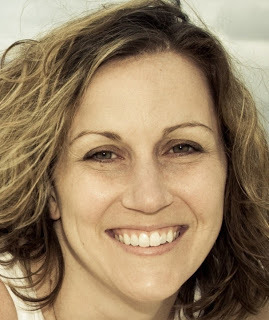 Tamara Cox
Tamara Cox
Reaching Out to Students in Poverty & Building a Love of Reading
According to Census records, 1 in 5 children in America live in poverty. The students I serve are no exception. In my school we have a 68% poverty rate. That translates to almost 7 out of 10 of our students living at or below the poverty line. What does that mean for me as a teacher and librarian? How can I encourage a love of reading in these students? What can our school do to help students rise above these challenges?
Research supports the following goals:
1. Increase access to books.
Children in poverty have limited or no access to books at home. Access to books increases reading which positively influences writing, grammar, spelling, and vocabulary. This connection makes access a huge priority. Educators can increase access by offering extended library hours, host a book swap and book fair, build classroom libraries and give books as rewards.
2. Provide a variety of reading materials.
When students are asked about their favorite books the answers are widely varied. This means that we need to have books that appeal to many interests and levels. Buy popular titles, not just the award winners. Subscribe to magazines and don’t forget about comics and manga series.
3. Build support for silent sustained reading.
Carving out time for students to read for pleasure at school is so important and supported by research. For SSR to have the highest impact it must be supported by all of the teachers and students must see the teacher reading during this time. Communicate the importance of the program to all staff members by sharing research findings.
4. Build relationships.
Building relationships is vital for students living in poverty. They need role models and mentors that can show them an alternative to their current situation. It is often recommended that teachers loop with their students in order to deepen relationships. Even without looping students can build lasting relationships with the librarian, counselors and other faculty. Create an environment that makes students feel welcome and safe. Showing up for performances and games and expressing interest in the students' lives is another component of connecting.
5. Allow students to eat in the library and classroom. Children of poverty are often food insecure. Either they are undernourished and hungry or they have a fear that they may be hungry in the near future. Allow your students to drink water and eat healthy snacks in school.
6. Plan a summer reading outreach. Children of poverty suffer the most from summer slide (loss of learning during summer months) because they lack access to books. Organize a summer reading program, offer summer library hours or allow students to check out books during summer months.
Our school has many other programs for our low-income students that are not directly related to reading. These include a school food pantry, a school-run market for clothes, school supplies and toiletries, tutoring before and after school, lunch time learning, breakfast in the classroom, neighborhood bus tours for teachers and a poverty simulation professional development.
I would love to hear from other librarians and educators on how they reach out to students in poverty. What does your school or library do for these students?
Thank you, Tamara, for these great thoughts. Your students are so lucky to have you on their team!
You can find Tamara blogging, tweeting (@coxtl) or pinning when she isn’t reading a book.
 Tamara Cox
Tamara Cox
Reaching Out to Students in Poverty & Building a Love of Reading
According to Census records, 1 in 5 children in America live in poverty. The students I serve are no exception. In my school we have a 68% poverty rate. That translates to almost 7 out of 10 of our students living at or below the poverty line. What does that mean for me as a teacher and librarian? How can I encourage a love of reading in these students? What can our school do to help students rise above these challenges?
Research supports the following goals:
1. Increase access to books.
Children in poverty have limited or no access to books at home. Access to books increases reading which positively influences writing, grammar, spelling, and vocabulary. This connection makes access a huge priority. Educators can increase access by offering extended library hours, host a book swap and book fair, build classroom libraries and give books as rewards.
2. Provide a variety of reading materials.
When students are asked about their favorite books the answers are widely varied. This means that we need to have books that appeal to many interests and levels. Buy popular titles, not just the award winners. Subscribe to magazines and don’t forget about comics and manga series.
3. Build support for silent sustained reading.
Carving out time for students to read for pleasure at school is so important and supported by research. For SSR to have the highest impact it must be supported by all of the teachers and students must see the teacher reading during this time. Communicate the importance of the program to all staff members by sharing research findings.
4. Build relationships.
Building relationships is vital for students living in poverty. They need role models and mentors that can show them an alternative to their current situation. It is often recommended that teachers loop with their students in order to deepen relationships. Even without looping students can build lasting relationships with the librarian, counselors and other faculty. Create an environment that makes students feel welcome and safe. Showing up for performances and games and expressing interest in the students' lives is another component of connecting.
5. Allow students to eat in the library and classroom. Children of poverty are often food insecure. Either they are undernourished and hungry or they have a fear that they may be hungry in the near future. Allow your students to drink water and eat healthy snacks in school.
6. Plan a summer reading outreach. Children of poverty suffer the most from summer slide (loss of learning during summer months) because they lack access to books. Organize a summer reading program, offer summer library hours or allow students to check out books during summer months.
Our school has many other programs for our low-income students that are not directly related to reading. These include a school food pantry, a school-run market for clothes, school supplies and toiletries, tutoring before and after school, lunch time learning, breakfast in the classroom, neighborhood bus tours for teachers and a poverty simulation professional development.
I would love to hear from other librarians and educators on how they reach out to students in poverty. What does your school or library do for these students?
Thank you, Tamara, for these great thoughts. Your students are so lucky to have you on their team!
You can find Tamara blogging, tweeting (@coxtl) or pinning when she isn’t reading a book.
Published on September 17, 2013 05:30
September 12, 2013
From the Office for the Future of Reading
This is a first: a guest post by a TV star! And one who loves books and stories; my favorite kind.
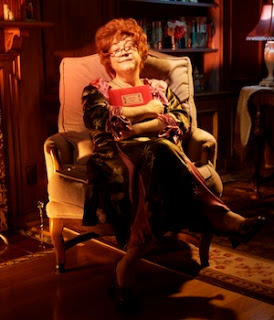 Mrs. P
Mrs. P
Back to School:How You Can Nurture Your Child’s Storytelling Skills
A guest post by Mrs. P of MrsP.com
When school starts, one of the most frequently asked questions of children is, “what did you do all summer?” Elementary school students are often asked to write a story about what they did on their summer vacation. Parents & teachers, you can play an important roll in finding ways to nurture storytelling skills.

Visit Mrs. P’s Magic Library and get your child’s classroom involved in my 5th anniversary writing contest. A writing contest can help children: Hone vital writing skills (such as developing clarity of images and ideas) Improve organizational skills (required to tell a well-structured story) Give the imagination a serious work-out (using completely different ‘muscles’ than when you listen to or watch a story someone else has created) Generate self-confidence (when a story you created entertains or influences a reader!)
A contest also helps a child experience deadlines and having parameters, like word counts and topics to write about. And of course, prizes often motivate children too. But most of all writing can be fun and it is wonderful to see a young writer get recognized for their work, just like an athlete or musician does.
The skill of mastering the written word is one of the greatest gifts we can give our children. For evidence of its power, we need only look at Shakespeare’s plays, which still move audiences more than 400 years after they were written; or the Constitution of the United States, which presidents and lawmakers still look to for guidance 200 years after its authors first put pen to paper. What better way to begin developing such an important skill than with “tell me a story...”?
The contest is free to enter and open to all K-4 classrooms in the United States with entries accepted from September 1, 2013 through November 15, 2013.K-4 classrooms nationwide are invited to write a story about "Magic,” the theme of this year’s contest, containing no less than 250 words and not to exceed 1,000. It may be fiction or non-fiction. One story per classroom will be accepted and each entry can either be a collaborative story, or classrooms can vote on which child's story to enter.My Be-a-Famous Writer Contest has been fortunate to partner with companies that promote reading, writing and overall literacy. Our sponsors, Tales2Go, myON, PolkaDot Publishing, Buyer Topia, and Powell’s Bookshave generously donated prizes ranging from gift certificates for books all the way up to whole school licenses to access their various solutions. The details of the contest can be found here.
Mrs. P is a character played by actress Kathy Kinney, best known for her role as Mimi, on the Drew Carey Show. MrsP.com endeavors to expose young people to great books and stories through a celebrity storyteller and to spark their imaginations and creativity with on-line games and writing contests.
 Mrs. P
Mrs. P
Back to School:How You Can Nurture Your Child’s Storytelling Skills
A guest post by Mrs. P of MrsP.com
When school starts, one of the most frequently asked questions of children is, “what did you do all summer?” Elementary school students are often asked to write a story about what they did on their summer vacation. Parents & teachers, you can play an important roll in finding ways to nurture storytelling skills.

Visit Mrs. P’s Magic Library and get your child’s classroom involved in my 5th anniversary writing contest. A writing contest can help children: Hone vital writing skills (such as developing clarity of images and ideas) Improve organizational skills (required to tell a well-structured story) Give the imagination a serious work-out (using completely different ‘muscles’ than when you listen to or watch a story someone else has created) Generate self-confidence (when a story you created entertains or influences a reader!)
A contest also helps a child experience deadlines and having parameters, like word counts and topics to write about. And of course, prizes often motivate children too. But most of all writing can be fun and it is wonderful to see a young writer get recognized for their work, just like an athlete or musician does.
The skill of mastering the written word is one of the greatest gifts we can give our children. For evidence of its power, we need only look at Shakespeare’s plays, which still move audiences more than 400 years after they were written; or the Constitution of the United States, which presidents and lawmakers still look to for guidance 200 years after its authors first put pen to paper. What better way to begin developing such an important skill than with “tell me a story...”?
The contest is free to enter and open to all K-4 classrooms in the United States with entries accepted from September 1, 2013 through November 15, 2013.K-4 classrooms nationwide are invited to write a story about "Magic,” the theme of this year’s contest, containing no less than 250 words and not to exceed 1,000. It may be fiction or non-fiction. One story per classroom will be accepted and each entry can either be a collaborative story, or classrooms can vote on which child's story to enter.My Be-a-Famous Writer Contest has been fortunate to partner with companies that promote reading, writing and overall literacy. Our sponsors, Tales2Go, myON, PolkaDot Publishing, Buyer Topia, and Powell’s Bookshave generously donated prizes ranging from gift certificates for books all the way up to whole school licenses to access their various solutions. The details of the contest can be found here.
Mrs. P is a character played by actress Kathy Kinney, best known for her role as Mimi, on the Drew Carey Show. MrsP.com endeavors to expose young people to great books and stories through a celebrity storyteller and to spark their imaginations and creativity with on-line games and writing contests.
Published on September 12, 2013 05:00
September 11, 2013
Wednesday Wisdom
It's a happy talent to know how to play.
Ralph Waldo Emerson
Ralph Waldo Emerson
Published on September 11, 2013 06:30
September 10, 2013
From the Office of the Future of Reading
Maria Selke is an elementary gifted resource teacher in West Chester, PA. A lifelong member of the Nerdy Book Club; she is also thankful for teachers who allowed her to tackle tough books early in her reading career.
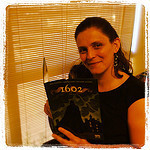 Maria Selke
Maria Selke
So you have advanced readers, and you want to be sure you meet their needs this year? First, let me thank you for realizing that they won’t just “be okay” without anything from you. Even students who are already passionate, strong readers deserve a teacher who is invested in helping them grow each year.
I could go on for pages about my advice to parents and teachers, but I’ll stick with one main thing you can do this year that will make a huge difference.
Let go of Goldilocks
Over the years, teachers have created so many ways to help kids find those just right books. Whether you believe in the “five finger” rule, Fountas and Pinnell levels, or some other method of determining the best level for a child’s daily reading - your strong readers need you to let it go. There are valuable experiences just beyond those walls, and it’s your job to help kids find them.
“That book is too hard”
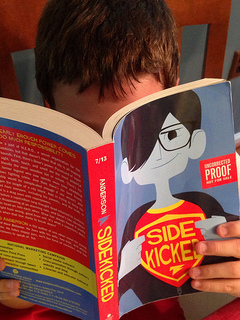 Longer books can be more satisfying for strong readers
Longer books can be more satisfying for strong readers
A book may seem “too hard” because it is filled with challenging vocabulary. Often gifted readers can understand many of those words even if they can’t yet pronounce them all. Or they can glean the meaning from the rest of the text, which helps them begin to build their own mental construct. It’s okay if they can’t spit out a definition the first time (or the fifth time) they read it. Challenging vocabulary is also a hallmark of nonfiction texts, which can be a favorite genre for advanced readers. Guide them to the glossary, or help them find an approximate definition from context. Then set them free to soar. “Too hard” may also be a rewarding experience, if a reader tackles it voluntarily. Your job is to make sure your reader knows strategies for monitoring comprehension. Be sure that you have also discussed how and when to decide to abandon a book. So many adults argue, “he’ll get more out of that book if he reads it later!” Instead we should remember that we get something different out of every book depending on when we read it. That book you want to take away now may be the one she reads again as a teen, and a college student, and an adult -- getting something new from it at each stage. Some teachers and librarians also worry that if students jump into harder books too soon they will miss out on the books designed for their age group. Let me assure you that kids choosing to read challenging books is not the problem. Strong readers avoid books targeting their age group when parents and teachers say things like…
“That book is too easy”
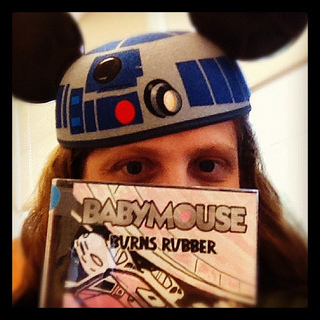 Your reading level is never “too high” to enjoy Babymouse!
Your reading level is never “too high” to enjoy Babymouse!
Come on - admit it. You’ve read many books below your “reading level”. Probably even read a few of them this summer, right? Just like there are many valuable lessons in a book that is too hard, a book that doesn’t tax her decoding skills can allow her to notice other text features. The same is true for a reread. A second or third reading of a book gives a reader the chance to pay attention to foreshadowing, lovely language, or other writing style choices he may have missed when he read the book for the plot the first time through.
“Just Right” means a well-rounded reading diet
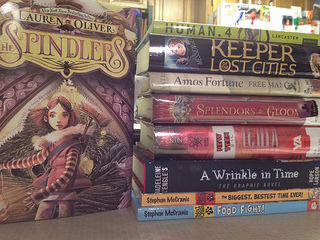 Caption: Reading widely is so important! Just like a healthy diet, a healthy reading life includes books of all types. This is especially true for advanced readers, who will frequently get stuck in a rut. They need some hard, some easy. Some picture books, some novels. Some poetry, some nonfiction. Respect their favorites, and allow them to have generous helpings of those books on their plate. Yet continue to nudge your strong readers into “taste testing” some new types of books this year, and you’ll go a long way toward improving their reading life.
Caption: Reading widely is so important! Just like a healthy diet, a healthy reading life includes books of all types. This is especially true for advanced readers, who will frequently get stuck in a rut. They need some hard, some easy. Some picture books, some novels. Some poetry, some nonfiction. Respect their favorites, and allow them to have generous helpings of those books on their plate. Yet continue to nudge your strong readers into “taste testing” some new types of books this year, and you’ll go a long way toward improving their reading life.
Well, this post got much longer than I expected! If you still want more information, check out some of the following resources:
Some of My Best Friends are Books - a great resource book with tons of titles, categorized by theme and age level.
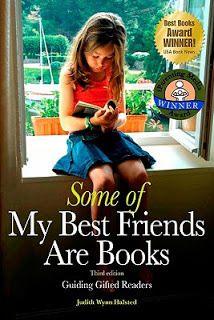
“You let him read WHAT?” - a post on my blog about not censoring readers, but teaching them to make wise selections.
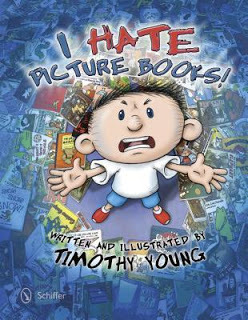
Top Ten Picture Books for Quirky Kids - my contribution to this year’s Top Ten Picture Books celebration.
Hoagies Gifted Website has many, many great themed reading lists for advanced readers
Thank you, Maria! I'm not a teacher, but as a book-buying auntie/grandma, this was really meaningful!
If you readers want to read more of what Maria thinks about kids and books and reading, check out her blog or follow her on Twitter: @mselke01
 Maria Selke
Maria SelkeSo you have advanced readers, and you want to be sure you meet their needs this year? First, let me thank you for realizing that they won’t just “be okay” without anything from you. Even students who are already passionate, strong readers deserve a teacher who is invested in helping them grow each year.
I could go on for pages about my advice to parents and teachers, but I’ll stick with one main thing you can do this year that will make a huge difference.
Let go of Goldilocks
Over the years, teachers have created so many ways to help kids find those just right books. Whether you believe in the “five finger” rule, Fountas and Pinnell levels, or some other method of determining the best level for a child’s daily reading - your strong readers need you to let it go. There are valuable experiences just beyond those walls, and it’s your job to help kids find them.
“That book is too hard”
 Longer books can be more satisfying for strong readers
Longer books can be more satisfying for strong readersA book may seem “too hard” because it is filled with challenging vocabulary. Often gifted readers can understand many of those words even if they can’t yet pronounce them all. Or they can glean the meaning from the rest of the text, which helps them begin to build their own mental construct. It’s okay if they can’t spit out a definition the first time (or the fifth time) they read it. Challenging vocabulary is also a hallmark of nonfiction texts, which can be a favorite genre for advanced readers. Guide them to the glossary, or help them find an approximate definition from context. Then set them free to soar. “Too hard” may also be a rewarding experience, if a reader tackles it voluntarily. Your job is to make sure your reader knows strategies for monitoring comprehension. Be sure that you have also discussed how and when to decide to abandon a book. So many adults argue, “he’ll get more out of that book if he reads it later!” Instead we should remember that we get something different out of every book depending on when we read it. That book you want to take away now may be the one she reads again as a teen, and a college student, and an adult -- getting something new from it at each stage. Some teachers and librarians also worry that if students jump into harder books too soon they will miss out on the books designed for their age group. Let me assure you that kids choosing to read challenging books is not the problem. Strong readers avoid books targeting their age group when parents and teachers say things like…
“That book is too easy”
 Your reading level is never “too high” to enjoy Babymouse!
Your reading level is never “too high” to enjoy Babymouse! Come on - admit it. You’ve read many books below your “reading level”. Probably even read a few of them this summer, right? Just like there are many valuable lessons in a book that is too hard, a book that doesn’t tax her decoding skills can allow her to notice other text features. The same is true for a reread. A second or third reading of a book gives a reader the chance to pay attention to foreshadowing, lovely language, or other writing style choices he may have missed when he read the book for the plot the first time through.
“Just Right” means a well-rounded reading diet
 Caption: Reading widely is so important! Just like a healthy diet, a healthy reading life includes books of all types. This is especially true for advanced readers, who will frequently get stuck in a rut. They need some hard, some easy. Some picture books, some novels. Some poetry, some nonfiction. Respect their favorites, and allow them to have generous helpings of those books on their plate. Yet continue to nudge your strong readers into “taste testing” some new types of books this year, and you’ll go a long way toward improving their reading life.
Caption: Reading widely is so important! Just like a healthy diet, a healthy reading life includes books of all types. This is especially true for advanced readers, who will frequently get stuck in a rut. They need some hard, some easy. Some picture books, some novels. Some poetry, some nonfiction. Respect their favorites, and allow them to have generous helpings of those books on their plate. Yet continue to nudge your strong readers into “taste testing” some new types of books this year, and you’ll go a long way toward improving their reading life.
Well, this post got much longer than I expected! If you still want more information, check out some of the following resources:
Some of My Best Friends are Books - a great resource book with tons of titles, categorized by theme and age level.

“You let him read WHAT?” - a post on my blog about not censoring readers, but teaching them to make wise selections.

Top Ten Picture Books for Quirky Kids - my contribution to this year’s Top Ten Picture Books celebration.
Hoagies Gifted Website has many, many great themed reading lists for advanced readers
Thank you, Maria! I'm not a teacher, but as a book-buying auntie/grandma, this was really meaningful!
If you readers want to read more of what Maria thinks about kids and books and reading, check out her blog or follow her on Twitter: @mselke01
Published on September 10, 2013 05:30



